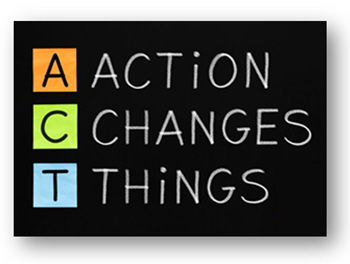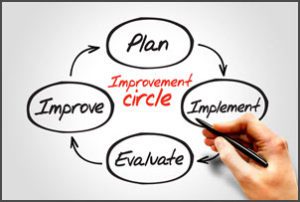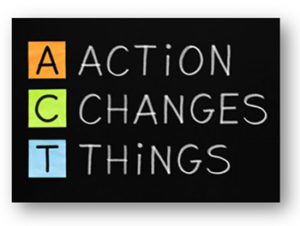What is Job Costing?

Job costing, also known by some as job order costing, is an accounting method used to track the costs associated with a specific job or project. This method is typically used in industries where goods or services are produced based on a specific customer order, and each order or job has distinct production or service requirements.
In job costing, direct materials, direct labor, and overhead costs are tracked for each job separately. The main goal is to determine the total cost of production for each individual job to accurately set the selling price and ensure profitability.
Here’s how it works:
Direct materials:
These are the raw or purchased materials used specifically in a job, such as the cost of wood for a custom furniture manufacturer.
Direct labor:
These are the wages (and related employment costs – also known as ‘labor burden’) of the workers who are directly involved in the production of the goods or services. For example, the wages and labor burden of the carpenters building the custom furniture.
Overhead costs:
These are indirect costs that cannot be directly attributed to a specific job but are part of the production process. These costs should be allocated to each job based on a pre-determined allocation base. Examples can include rent, utilities, and indirect materials and labor.
Job costing allows companies to accurately price their products or services by ensuring all costs are considered. It also provides valuable information for managerial decision-making, such as identifying which jobs are more profitable or where inefficiencies may be occurring.
Is Job Costing Worth It?
Do you ever wonder if it’s worth your time to implement a job costing system? If so, you might be asking yourself…
- Why should I care about job costing?
- Why not just assign all materials costs to a Materials cost account?
- Or throw all payroll to a single Payroll expense account?
- Isn’t it a lot of extra work to enter a job name and job code to our transactions?
- Can’t I just keep an eye on the checkbook and wait until year-end tax time to find out how much my company made or lost last year?
Unfortunately, many, if not most, small and medium companies have an approach to job costing that looks something like this:…
 “Let’s sell more, ignore the details, and charge full speed ahead!”
“Let’s sell more, ignore the details, and charge full speed ahead!”
Doing this is a lot like: “We’ll get to our destination faster – by driving at night, down a back road, without headlights or a GPS!”
That’s both risky – and potentially fatal. Why? lt leaves you in the dark when it comes to making the profits you deserve!
It will never be as rewarding, safe, or efficient as driving on a smooth, clearly marked highway…
Five Ways to Use Job Costing to Increase Your Gross Profits:
Use these five techniques to SEE exactly how you can make that BIG change in your gross profits! (And, of course, gross profits directly impact your “take-home pay.”)
1. Reduce Your “Costs of Production” by using “Estimate vs. Actual” Job Costing Reports
It’s no fun to discover (oftentimes months after a job has closed) – that you’ve lost money on that job. Or that you just squeaked by with a minimal profit…
Here’s the solution:
-
 Set up your job costing system to report Estimated vs. Actual Costs and Income as you move through each job. That way, you’ll spot variances and correct problems long before they spin out of control.
Set up your job costing system to report Estimated vs. Actual Costs and Income as you move through each job. That way, you’ll spot variances and correct problems long before they spin out of control.- After you’ve completed the job, determine exactly where actual costs were different than planned.
- You can use your insights to improve your processes and prevent problems on a look-forward basis.
Consistently using “Estimate vs. Actual” reports should make it easy to discover where you can reduce direct costs.
With consistent monitoring, you may be able to enhance your gross profits by 5% (or more)!
Grab your calculator. Multiply your gross profits by 5%. Could you find something “interesting” to do with those extra funds?
2. Use Job Costing To Locate and Charge for Lost or Invisible Costs
Job costing means you can see every outlay (payroll, burden, materials, contractor, and other costs) related to a job. Why is that important?
For Time & Materials jobs (and Change Orders!), you should invoice your customers for their project costs.
If you DON’T have a system that shows the costs assigned to each job (by cost code), it’s very easy to make invoicing mistakes!
Here’s an example…
Let’s say your bookkeeper enters a $700 bill for a customer’s job. If you normally use a 33.3% markup (to yield a 25% gross profit), you’d invoice your customer $933 for this item, right?
BUT,
-
- If you don’t use job costing to assign this $700 cost to the job, it’s easy to overlook that cost.
- As a result, you miss invoicing for that specific line item.
You end up eating not only the $700 cost but you lose the $233 markup as well.
 In other words, that “invisible” cost just took $933 directly out of your pocket!
In other words, that “invisible” cost just took $933 directly out of your pocket!
When you find this type of mistake after it’s too late to fix, you might even reflect on, “What could that missing money have meant to my family?“
These kinds of errors are easy to make. And when they happen regularly, they can have a BIG, cumulative impact on your gross profits.
Instead, you can use your job costing to INCREASE – rather than lose – gross profits by using it as a tool to invoice your customers correctly.
When you use job costing, you automatically see the time and costs for each job. It’s time to STOP those invisible (and costly!) “gifts” of time and materials to your customers.
Job costing means that you and your customer are both treated fairly. (And you do deserve to be treated fairly, right?)
3. Use Job Costing to Spot and Eliminate Your Low-Profit and Loser Jobs
Why is eliminating low-profit and loser jobs such a powerful profit-building tactic? Because every “loser” job is wiping out the exceptional profits you could be making on another venture!
For example:
-
-
- Assume you have two jobs at an equal sales price (e.g., $500,000 each).
- For one project, you earned a 25% Gross Profit margin of $125,000 (yay!). But on the other same-size job, you lost $50,000 (-10%).
- The result is that the $50,000 loss on the “loser” job reduces your overall gross profit down to $75,000 (7.5%).
- Instead of two jobs at 25% that would have yielded $250,000 gross profit, you’re left with $75,000. Ouch!
- $250,000 vs. $75,000 – which would you prefer?
- Bypass those pitfalls! Use your job costing history to identify – and avoid – those potential losers.
-
When you replace projects that lose money (or only yield minimal profits) with jobs that achieve your gross profit targets, you substantially increase your gross (and net) profits.
4. Job Costing Shows You Where To Shift Into Higher Gross Profit Work
Why not shift your business mix to perform MORE of your higher profit work and LESS of the lower profit work?
Use your job costing system to determine which TYPES of work yield a higher gross profit. To illustrate, in a $1,000,000 company, if:
-
- Half of your “Type A” jobs yield an average 25% gross profit, and
- “Type B” jobs make up the other half of your work and show an average 11% gross profit, then
- Your gross profit would be $180,000 (18.0% GP).
We’ll also assume that both types of work require about the same amount of YOUR time and energy.
Now, let’s imagine that you use your job costing information to strategize how to shift all of your work into “Type A” (higher gross profit) jobs.
When all of your jobs now have a margin of 25% – your gross profit becomes $250,000.
That’s an increase of $70,000 – a THIRTY-NINE PERCENT (39%) increase!! It’s just one way to use a job costing system to give yourself a raise…
5. Use a Combination of These Techniques to Add 10% (or More) to your Gross Profit.
What would a 10% GP increase look like for YOU?
 For example, what if you could change your gross profit from 13% to 23% or from 15% to 25%, or from 18% to 28%?
For example, what if you could change your gross profit from 13% to 23% or from 15% to 25%, or from 18% to 28%?
-
- If you have $500,000 in Gross Sales, that 10% increase would add $50,000 to your pre-tax income.
- Or, you may have $1,000,000 in Gross Sales. If so, it would add $100,000 to your pre-tax income.
- If you have $10,000,000 in Gross Sales, increasing your gross profit by 10% would add $1,000,000 to your pre-tax income.
And remember, these are ANNUAL, RECURRING changes, so you’re putting more profits into your pocket year after year after year!
You could likely find something interesting to do with those extra funds each year, right? Maybe:
-
- Buy that car/boat/plane you’ve been looking at for years.
- Invest some of it into your future via a retirement fund.
- Contribute to your favorite charity.
- Delight your family with that luxury vacation.
- Pay off those outstanding, burdensome debts.
Your desires may be different than these, but – regardless of what’s on YOUR “vision list,” they are worth keeping on the front burner.
The “Strategic Benefits of Job Costing
When you track the kinds of work that create the best profits for your company, you can use that knowledge to make strategic and long-lasting changes to your company’s business model.
For instance, you may choose to scale down to fewer (but consistently profitable) jobs. Or you could decide to grow your company after achieving a better profit margin. You might choose to focus on a favorite niche (as the saying goes: “the riches are in the niches”) where you benefit financially from your specialized knowledge.
Regardless of which approach(es) you choose, job costing provides a potent set of decision-making and profit-building tools. The payback on your investment can be most impressive!
![]()
People Also Ask
FAQs (Frequently Asked Questions)
1. What is job costing, and how does it help increase gross profits?
Job costing is a method of tracking expenses for a specific project or job. It helps increase gross profits by providing detailed insights into the income and costs associated with each job, allowing you to identify and address inefficiencies or costs overlooked when creating customer billings.
2. What are the key components of job costing?
The key components of job costing include tracking labor, materials, and overhead costs. These components help you determine the total cost of a job and compare it to the revenue generated to assess profitability.
3. How can job costing improve project management?
Job costing improves project management by providing real-time data on job expenses and progress. This information helps you make informed decisions, manage budgets, and ensure projects are completed on time and within budget.
4. What tools can be used for job costing?
Tools commonly used for job costing include accounting software like QuickBooks, spreadsheets, and specialized construction management software. These tools help streamline the process of tracking and reporting job costs.
5. How does accurate job costing benefit a construction business?
Accurate job costing benefits a construction business by ensuring that all costs are accounted for, which helps in pricing jobs correctly, improving cash flow, and maximizing profitability.
6. What is the difference between job costing and process costing?
Job costing tracks costs for individual projects or jobs, while process costing accumulates costs for continuous processes or mass production. Job costing is more suitable for construction businesses and ‘job shop’ manufacturing, whereas process costing is used in ‘non-job’ types of manufacturing.
7. Can job costing help with forecasting future projects?
Yes, job costing can help with forecasting future projects by providing historical data on past job costs. This data can be used to estimate costs for similar future projects, improving accuracy in budgeting and planning.
8. How do you handle job costing for multiple projects simultaneously?
Handling job costing for multiple projects simultaneously involves using job costing software and data entry to track expenses and revenues for each project separately. This approach ensures accurate reporting and management of each project’s financial results.
9. What are some common challenges in job costing?
Common challenges in job costing include accurately tracking labor costs, managing material costs, and allocating overhead costs. These challenges can be addressed with proper systems, training, and software.
10. How can I ensure my job costing data is accurate?
Ensuring job costing data is accurate involves regular monitoring and updating of job costs, using reliable software, and training staff on proper data entry and tracking procedures.
Additional resources and guides are available on the Build Your Numbers website.
![]()
LOOKING FOR MORE INFORMATION ABOUT JOB COSTING?
- Investigate our job costing video training…
Accounting & Management Program (CAMP) - Listen to…
Diane’s Podcast with Dr. Sabrina Starling and Mike Bruno (hosts of “Profit by Design”). This Profit by Design podcast asks the BIG question: “What has your business done for YOU lately?“ - Watch…
How to Increase Your Profits and Close More Sales: Bernie Heer (Author, Founder & President of Contractor Profit Zone) and Diane Gilson team up to illustrate how you can use your numbers to maximize your marketing and sales results.
NOTE: An earlier version of this article by Diane Gilson first appeared in the Builder Partnerships blog.
Customer Praise For Diane Gilson, Info Plus Consulting, and BuildYourNumbers.com
⭐⭐⭐⭐⭐ From the Intuit FindAProAdvisor website:
“Diane was great, very quick to get to the bottom of the troubles we were having on our QB’s balance sheets. Entirely positive experience working with her.”
See More Customer and Client Comments
